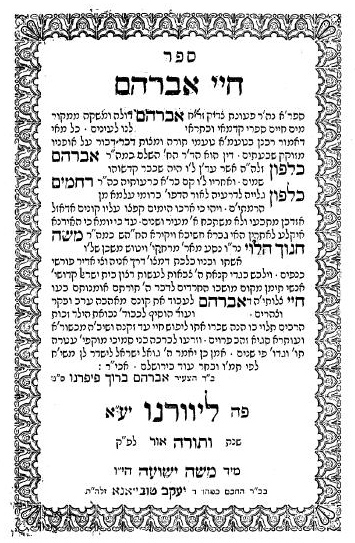This Day in History – 6 Tishrei/September 10
6 Tishrei
Yahrtzeiten
5566/1805, Harav Binyamin Zev Eiger, zt”l, Rav of Leipnik
5572/1811, Harav Aryeh Leib, the Shpolyer Zeide, zt”l
5632/1871, Harav Mordechai of Tolna, zt”l
5770/1909, Harav Noach Shachor, zt”l, of Biale
5728/1967, Harav Yisrael Tausig, zt”l, of Kiryas Mattersdorf, Yerushalayim
5736/1975, Harav Tzvi Hersh Hakohen Kupshitz of Yerushalayim, zt”l

5580/1819
Harav Avraham Kalfon, zt”l, Rav of Tripoli, Libya
Harav Avraham Kalfon was born in Libya in 5495/1735. His father was Rav Refael. The family was a distinguished one, their lineage stemming from Parnassim and Dayanim.
Harav Avraham writes of himself that he was appointed Parnass in Tripoli in 5535/1775, holding the post until 5541/1781, with another term from 5552/1792 until 5558/1798.
He was fluent in both nigleh and nistar.
Harav Avraham was interested in history and searched through archives for manuscripts, becoming fluent in the Jewish history of ancient Tripoli.
He had a special relationship with the Chidah; the two exchanged many letters. In 5564/1804, Harav Avraham went to Livorno, living there near the Chida for a year and a half.
Harav Avraham was renowned for his acts of tzedakah, especially for needy talmidei chachamim.
His love of Eretz Yisrael impelled him to move there in 5566/1806. He settled in Tzefas, where he remained for the rest of his life.
Harav Avraham was niftar on Shabbos Shuvah, 6 Tishrei, 5580/1819, at the age of 84.
He wrote numerous sefarim. The best known is Chayei Avraham, on the reasons for the mitzvos.
Zecher tzaddik livrachah.

September 10
In 1608, John Smith was elected president of the Jamestown Colony council in Virginia.
In 1813, an American naval force commanded by Oliver H. Perry defeated the British in the Battle of Lake Erie during the War of 1812. (Afterward, Perry sent out the message, “We have met the enemy and they are ours.”)
In 1846, Elias Howe received a patent for his sewing machine.
In 1919, New York City welcomed home Gen. John J. Pershing and 25,000 soldiers who’d served in the U.S. First Division during World War I.
In 1939, Canada declared war on Germany.
In 1945,Vidkun Quisling was sentenced to death in Norway for collaborating with the Nazis. He was executed by firing squad in October 1945.
In 1962, the U.S. Supreme Court ordered the University of Mississippi to admit James Meredith, a black student.
In 1963, twenty black students entered Alabama public schools following a standoff between federal authorities and Gov. George C. Wallace.
In 1979, four Puerto Rican nationalists imprisoned for a 1954 attack on the House of Representatives and a 1950 attempt on the life of President Harry S. Truman were freed from prison after being granted clemency by President Jimmy Carter.
In 1983, John Vorster, prime minister of white-ruled South Africa from 1966 to 1978, died in Cape Town at age 67.
In 1990, the main building at Ellis Island was reopened to the public as the Ellis Island Immigration Museum.
To Read The Full Story
Are you already a subscriber?
Click "Sign In" to log in!

Become a Web Subscriber
Click “Subscribe” below to begin the process of becoming a new subscriber.

Become a Print + Web Subscriber
Click “Subscribe” below to begin the process of becoming a new subscriber.

Renew Print + Web Subscription
Click “Renew Subscription” below to begin the process of renewing your subscription.



